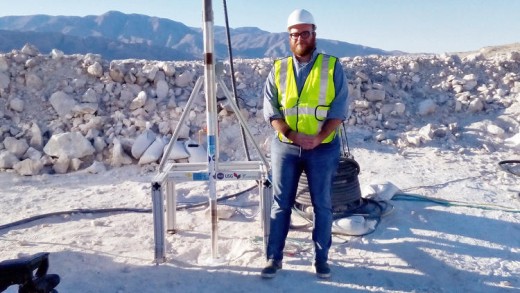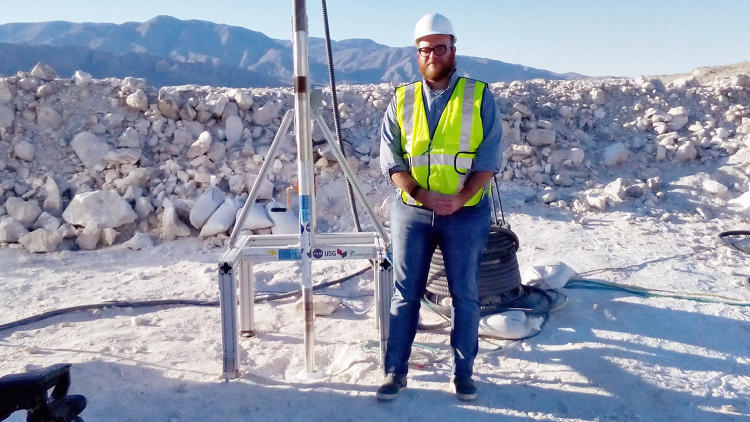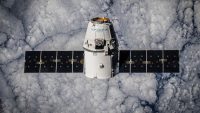hunting for ET in the California wilderness
When the following Mars rover lands in 2020, one among its targets will be to look if the purple planet’s rocks are hiding proof of extraterrestrial microbes. NASA dreams of one day exploring the ice glaciers of the planet’s poles to look if there is certainly life on Mars. except then, the gap company is busy testing the ET-searching know-how.
That’s how i discovered myself using five hours from my los angeles place of business deep into the California wasteland. My vacation spot used to be an remoted quarry, greater than five miles from the nearest town, just near the ecological disaster that is California’s Salton Sea.
I was once headed to a place named Plaster metropolis, which is where Sheetrock, the ubiquitous constructing subject matter, is made. Sheetrock’s producer, USG (originally often called u.s. Gypsum) quarries the gypsum that is used to make the material at the web page. It also hosts some gypsum deposits there that mostly replicate the density of Mars’ glaciers. An impossibly slim gauge railroad consists of the quarried minerals to a refinery twenty miles south, on the subject of the Mexican border, the place they will be was Sheetrock. As I prepare to move uphill to the Martian take a look at web page, a quarry employee warns me to appear out for rattlesnakes.
On a quarry hilltop, Bollek Mellerowicz of Honeybee Robotics is trying out tools that can make it to Mars in the future. Honeybee Robotics manufactures specialized components for spacecraft, and Mellerowicz is an electrical engineer who focuses on constructing robotics for harsh environments. His work has led him to Greenland and the Canadian Arctic, and these days he is studying rock samples in a California barren region that’s sixty five degrees in September and climbs to 120 in the summertime.
it is a pleasant autumn day here in the wasteland, however temperatures are going to get actual heat over the next few months as his workforce tries to copy Martian prerequisites. The gypsum under my feet, it turns out, is vital.
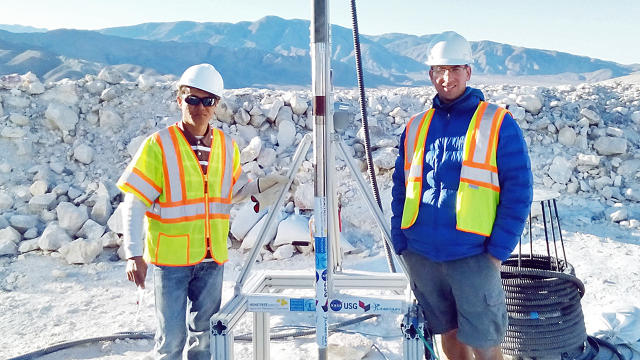
“The thickness and the density of the gypsum is similar to glacial ice on Mars, which was once up to 200 feet thick at one time. here on the Salton Trough, the gypsum is 6.5 million years old,” Mellerowicz introduced.
Honeybee is perfecting the Planetary Deep Drill. It’s a proof-of-thought coring drill which might at some point take samples from deep beneath the ice of Mars and Europa and, confidently, find proof of organic molecules which may point out life.
In a couple of months, it’s headed to Greenland, where an instrument referred to as Scanning habitable Environments with Raman & Luminescence for Organics & chemical substances (SHERLOC) can be attached to it. SHERLOC will go on the Mars 2020 mission to lend a hand in finding proof of organic compounds that might point out extraterrestrial lifestyles; NASA and the American Museum of pure historical past are helping with funding.
The deep drill comes with two challenges, particular to house exploration, which require an awfully explicit skillset from the engineers working on the project:
- For the foreseeable future, Mars explorer rovers will not keep samples with them. moderately, they acquire samples, quick transmit the implications to earth, and dispense with the samples so they don’t placed on too much weight.
- Mars and Europa are far from earth, and the drill has to work with out blunders.
In other phrases, Honeybee is working a big-ass drill in the midst of nowhere. Mellerowicz, engineer Heuy Nguyen, and representatives from USG spend their day overseeing the drill’s supervision because it takes core samples from as much as 30 meters below the ground. I’m 6’2″ and the drill towers above me at 18 toes in peak; it’s lined in stickers from Honeybee, NASA, and other sponsors, and has cables operating to a close-by U-Haul trailer which serves as an impromptu keep an eye on middle. a nearby generator supplies energy. It’s designed to function on under 250 watts of electrical energy, a safe energy provide for extraordinarily dear spacecraft exploring far from earth.
The drill pulverizes the rock beneath it and extracts core samples; Honeybee and NASA then plan to apply the methodology to Mars’ polar ice, which can indeed be as onerous as stone.
Dominic Dannessa, USG’s CTO, informed quick company that “The topography of the area is similar to what NASA expects to search out on Mars and Europa;” Honeybee is one in every of plenty of vendors developing expertise for the next Martian rover.
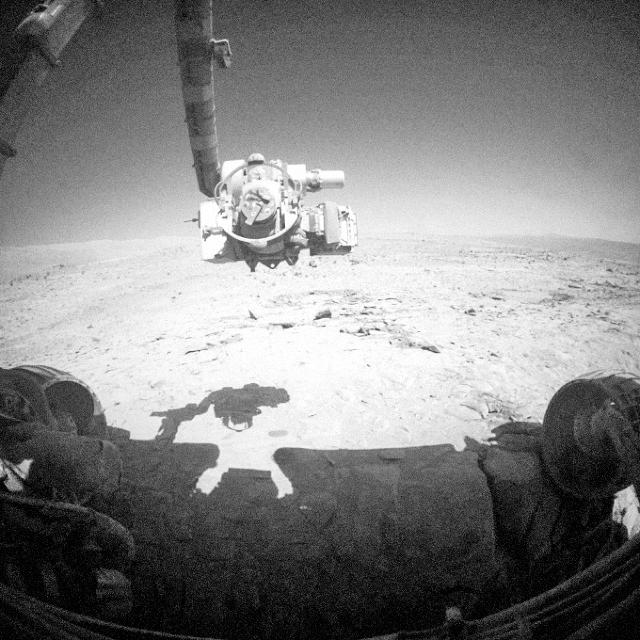
for the reason that drill has to function on Mars, far far from human controllers, it has to work in a roughly computerized model. As Mellorowicz confirmed me across the cramped confines of the trailer, he confirmed off the drill’s secret sauce: A microscopic camera within the drill which seems to be for indicators of microorganisms. using UV and LED lights, the drill can to find microorganisms that flouresce; “Bioflourescence from microorganisms can point out signs of lifestyles,” he added.
The trailer is full of television displays and laptops running telemetry data from the drill; Mellerowicz and his staff work 6 a.m.- 4 p.m. shifts on web site there, with the intention of constructing the drill absolutely autonomous.
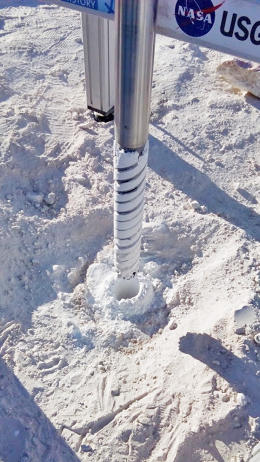
thanks to tectonic approaches accrued over the millennia, there are approximately 200 feet of gypsum underneath the Planetary Deep Drill. As it really works, slowly excavating the minerals underneath it, Honeybee and NASA are both planning additional iterations of the drill prior to it’s reformatted for its Martian debut. in step with Mellerowicz, the finished product can be much shorter with totally different dimensions. the entire drilling at Ocotillo Wells and USG is designed as a test, with a purpose to high the drill for its Martian debut.
in the meantime, the large question for Honeybee—and NASA—is where exactly the drill might be used. Honeybee hopes a version of the drill will make it onto the Mars 2020 Rover, however nothing is ready in stone. the whole thing is up to the vagaries of R&D, govt budgets, and 1,000,000 different elements. within the period in-between, I contact a recently-excavated pattern from the drill. it’s nonetheless heat to the contact, and the space equipment manufacturer still has years of research to move. your next step for research, Honeybee hopes, is taking the drill to Greenland—some other inhospitable surroundings which additionally occurs to be very with regards to what we’d predict outside of Earth.
<img alt="
Curiosity Rover on Mars
” src=”http://a.fastcompany.web/multisite_files/fastcompany/imagecache/slideshow_large/slideshow/2016/01/3054834-slide-s-1-looking-for-et-in-the-california-desolate tract.jpg”>
<img alt="
Honeybee and USG’s crew on website at Plaster metropolis, California.
” src=”http://a.fastcompany.net/multisite_files/fastcompany/imagecache/slideshow_large/slideshow/2016/01/3054834-slide-s-10-looking-for-et-in-the-california-barren region.jpg”>
<img alt="
Drilling in gypsum that generally replicates Martian glacier prerequisites.
” src=”http://b.fastcompany.internet/multisite_files/fastcompany/imagecache/slideshow_large/slideshow/2016/01/3054834-slide-s-eight-searching-for-et-in-the-california-wilderness.jpg”>
<img alt="
The core samples are warm to the touch.
” src=”http://a.fastcompany.net/multisite_files/fastcompany/imagecache/slideshow_large/slideshow/2016/01/3054834-slide-s-9-hunting-for-et-in-the-california-wilderness.jpg”>
<img alt="
Honeybee’s Bolek Mellerowicz and Huey Nguyen.
” src=”http://c.fastcompany.web/multisite_files/fastcompany/imagecache/slideshow_large/slideshow/2016/01/3054834-slide-s-7-looking-for-et-in-the-california-barren region.jpg”>
<img alt="
fast company’s Neal Ungerleider onsite at the quarry.
” src=”http://e.fastcompany.web/multisite_files/fastcompany/imagecache/slideshow_large/slideshow/2016/01/3054834-slide-s-5-hunting-for-et-in-the-california-desert.jpg”>
<img alt="
A drill head for the 18′ drill; a later model might make it to Mars or Europa.
” src=”http://d.fastcompany.net/multisite_files/fastcompany/imagecache/slideshow_large/slideshow/2016/01/3054834-slide-s-four-searching-for-et-in-the-california-wasteland.jpg”>
<img alt="
Drilling for core samples.
” src=”http://g.fastcompany.web/multisite_files/fastcompany/imagecache/slideshow_large/slideshow/2016/01/3054834-slide-s-3-looking-for-et-in-the-california-barren region.jpg”>
<img alt="
checks are repeatedly conducted at the remote California quarry.
” src=”http://h.fastcompany.internet/multisite_files/fastcompany/imagecache/slideshow_large/slideshow/2016/01/3054834-slide-s-2-looking-for-et-in-the-california-barren region.jpg”>
fast company , read Full Story
(18)

